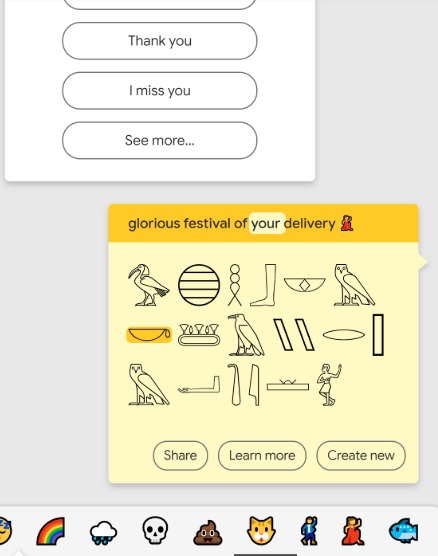Translate hieroglyphics with Google
Medical Pharmaceutical Translations • Jul 20, 2020 12:00:00 AM

Although it’s not perfect, Google Translate has become known as an easy way to translate over a hundred different languages. And now, the bot has a cousin who translates something you might not expect: hieroglyphics.
Google Arts & Culture’s Fabricius translator was launched on July 15, the anniversary of the 1799 discovery of the Rosetta Stone, the first tool (albeit non-digital) that allowed us to translate hieroglyphics.
First, let’s get this out of the way: This is a totally fun way to spend time. However, Google has taken things to another level, offering their software to academics the world over.
That has ruffled some feathers – but not because of issues like academic tradition or snobbery. Instead, there is a real issue here. Machine translation like Google Translate works with algorithms, which means that right now, it’s not a perfect translator for this newly acquired language.
And even with time, it will never be perfect, simply because machines are not human beings. If hieroglyphics refer to an obscure name or place, or need a great deal of context to be
understood, a computer can’t do that.
Additionally, Egyptologist Dr Roland Enmarch points out that since hieroglyphics were carved, drawn, or painted by hand, not typed by a machine, computers may have trouble understanding subtle variations of the same symbol.
So, translating entire tablets, wall paintings, and parchments of complex hieroglyphic passages is something better left to the experts.
But on the other hand, if you want to translate your name into hieroglyphics, or test Google to see if it can tell you what a single set of symbols mean, go right ahead.
There’s even a fun option that allows you to translate with emoji – a truly amazing meeting of a very old language that used pictures, and a very new one.
And Google’s initiative is admirable; with options like ready-made hieroglyphic messages to send to friends, and information and resources about Ancient Egypt, Fabricius might at the very least be a way for people to learn more about a fascinating language and society.
Read on for more information about Google’s Fabricius hieroglyphics translator, from how to use it, to what Egyptologists think of it.
A screengrab of Fabricius in action.
Contact Our Writer – Alysa Salzberg
